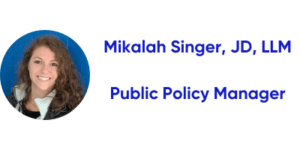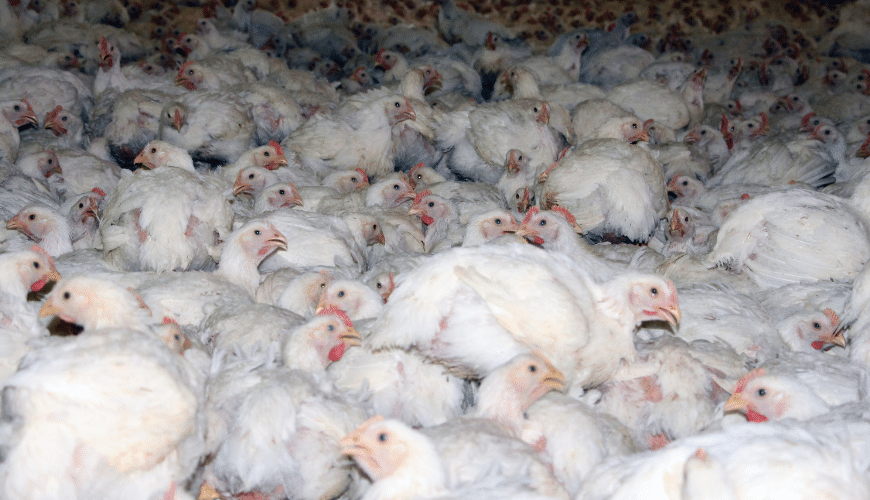
COVID-19 changed lives. We lost loved ones and missed out on moments like weddings and graduations. Since March 2020, the term “once in a lifetime” to describe the public health event has been used more than once. But the stark reality is that for many of us, it will not be once in a lifetime.
Not only has COVID-19 been one of many global disease outbreaks that have significantly impacted human society, but new evidence points to its animal origin, placing this pandemic in the ranks of historical zoonotic disease outbreaks. Zoonotic diseases are those that have originated in animals and spread to humans as a result of human-animal interactions and can be viral, parasitic, or bacterial. About three-fourths of emerging infectious diseases originate in non-human animals including animals in industrial agriculture and wild animals traded for consumption. Society does not largely recognize the link between the exploitation of animals and pandemics despite this undeniable connection.
A Focused Approach to Zoonotic Disease
The One Health Approach has done a great job opening the discussion on how interconnected human health, animals, and the environment are, but this approach falls short of considering animals’ mental or emotional needs. The One Health Approach only considers animal health in an infectious disease sense which restricts solutions to using antibiotics to protect farmed animals from disease. But this only leads to further public health issues such as antibiotic resistance and allows big animal agriculture lobbyists to point to the current veterinary standards and procedures, denying the role antibiotic resistance plays in public health. In order to protect humans, animals, and the environment in the way that the One Health Approach aims, we need to expand the interconnected approach to include what is best for animals beyond veterinary medicine
One way to expand upon One Health is by turning our focus on a root cause of zoonotic disease: human exploitation of animals, which includes industrialized agriculture and wildlife trade. Both wildlife markets and factory farms involve crowding a large number of animals into cramped, stressful conditions that can increase viral loads and therefore lead to more diseases. These conditions provide the right biological setting for viruses to transform into pathogens that can easily infect humans. Disease outbreaks from human mistreatment of animals are not a new consideration due to COVID-19.
In the wake of the swine flu global pandemic that infected between 43 and 89 million people worldwide during the early 2000s, the American Public Health Association said there should be a ban on concentrated animal feeding operations (CAFOs) in response to increased recognition of the pandemic risk these operations pose. Additionally, the Severe Acute Respiratory Syndrome (SARS) pandemic likely originated in a live-animal market. If we want to protect society from these diseases, we need to target the source and prevent these diseases from starting.
Policies to Improve Public Health
Public health-focused legislation can be the key to saving society from more pandemics and animals from mistreatment by humans. In recent years, both the United States House of Representatives and Senate have introduced bills that have animal protection and public health goals. Bills like the Farm System Reform Act of 2023 would place a moratorium on CAFOs. A moratorium on CAFOs would lower the number of animals being kept in confined conditions while also lowering the pandemic risk these operations pose. The Preventing Future Pandemics Act of 2021, which unfortunately has not been reintroduced for the 118th congressional session, focused on the pandemic risk from wildlife trade by establishing measures to address wildlife markets and the global health risk they pose. This legislation would have prohibited the trade of wildlife for the purpose of human consumption.
Both legislative examples could benefit public health by targeting some of the root causes of pandemics. Unfortunately, bills that focus on farmed animals or other animals exploited for human use have historically been ignored by legislators. Addressing the public health issues connected with animal exploitation, like living and transportation conditions, shows the only solution to protect public health is to eliminate those conditions. But, if we want legislation preventing pandemics and protecting animals to move forward, we need to change the narrative beyond animal protection to societal protection that benefits and protects humans, animals, and the planet. That starts with more discussions about the public health and animal protection connection and expands on the One Health Approach to discuss the role human exploitation of animals plays.

